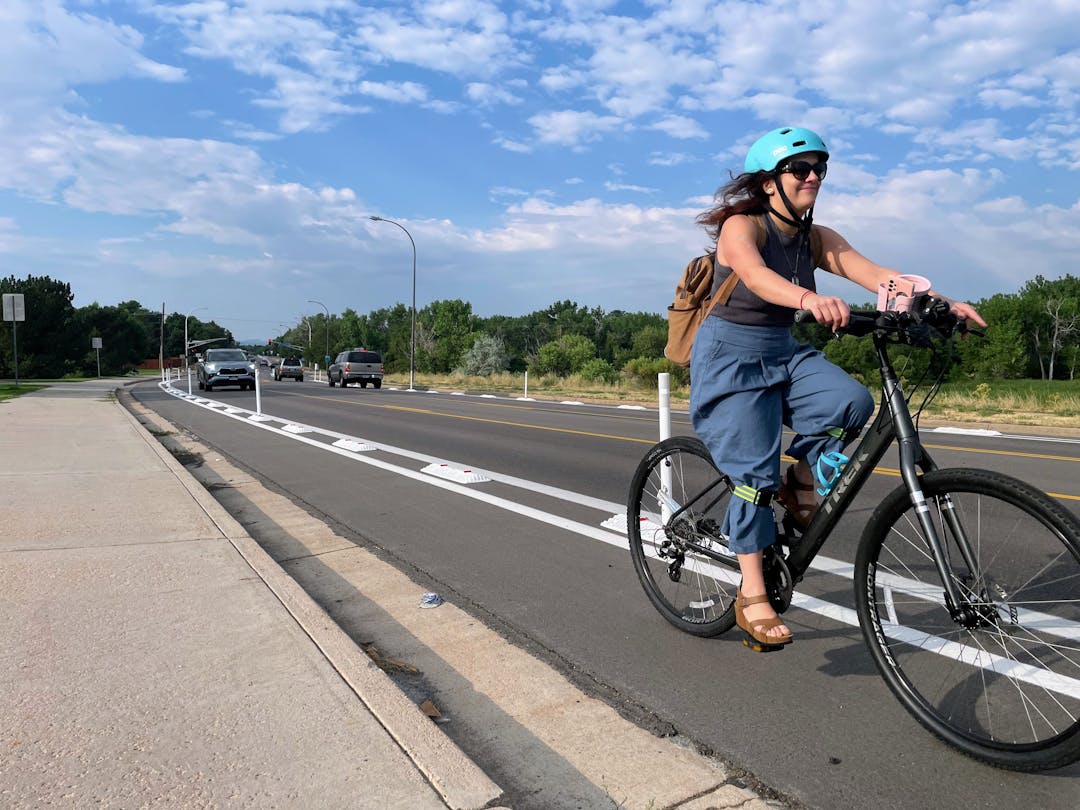Separated bike lanes coming to Lakewood

Lakewood is dedicated to creating a quality, safe, convenient, continuous and accessible bicycle transportation network to support bicycling as a mode of transportation for all ages and abilities. Besides having numerous health benefits, bicycling as a mode of transportation has the potential to relieve traffic congestion, improve air quality and increase overall mobility in the community.
What is a separated bike lane?
A separated bike lane, also known as a protected bike lane, is defined by the Federal Highway Administration as “an exclusive facility for bicyclists that is located within or directly adjacent to the roadway and that is physically separated from motor vehicle traffic with a vertical element."
Because they are physically separated from vehicular traffic, separated bike lanes can contribute to increased bicycling volumes by appealing to less-confident riders who may not feel comfortable riding a bicycle directly adjacent to a moving vehicle. They can also improve overall safety on the roadway by:
- Increasing motorists’ awareness of the bicycle facility,
- Preventing improper use of the bike lane as a turning, acceleration, or parking lane, and
- Reducing vehicle speeds by visually narrowing the roadway.
Summer 2024 installation
Lakewood installed the city’s first separated bike lanes this summer on Denver West Parkway, Garrison Street between Jewell and Alameda avenues, and a small section of Harlan Street near Alameda Avenue. These roads were all previously striped as buffered bike lanes (a double-striped bike lane with a 1-3' buffer zone between the bike lane and the adjacent travel lane) and were upgraded to separated bike lanes with the installation of plastic curbing and posts in the buffer zone. The short parking-protected segment of Garrison Street between Utah and Iowa avenues was also upgraded this summer with plastic posts in the buffer zone, but no curbing was installed to avoid creating a tripping hazard for motorists entering and exiting their parked vehicles.
Work was completed on Denver West Parkway in late June, on Harlan Street the first week of July, and on the first portion of Garrison Street between Jewell and Mississippi avenues in mid-July. The second portion of Garrison Street between Mississippi and Alameda avenues was completed in early August. No re-striping took place as a part of this installation.
Next steps
A proposed network of future separated bike lanes will be developed during the 2024-25 update of Lakewood's Bicycle Plan. In addition to pursuing recommendations in the updated plan, the city will continue to evaluate locations for installing separated bike lanes during the annual street maintenance program when roads are repaved. They will also be considered on an ongoing basis using the factors listed on the right side of this page.
Stay up to date on the status of these separated bike lanes as they are added throughout the city by subscribing to this page, and participate in this project in other ways:
Watch March 2024 project update presentation to City Council.
Review the Additional Information section to the right.





